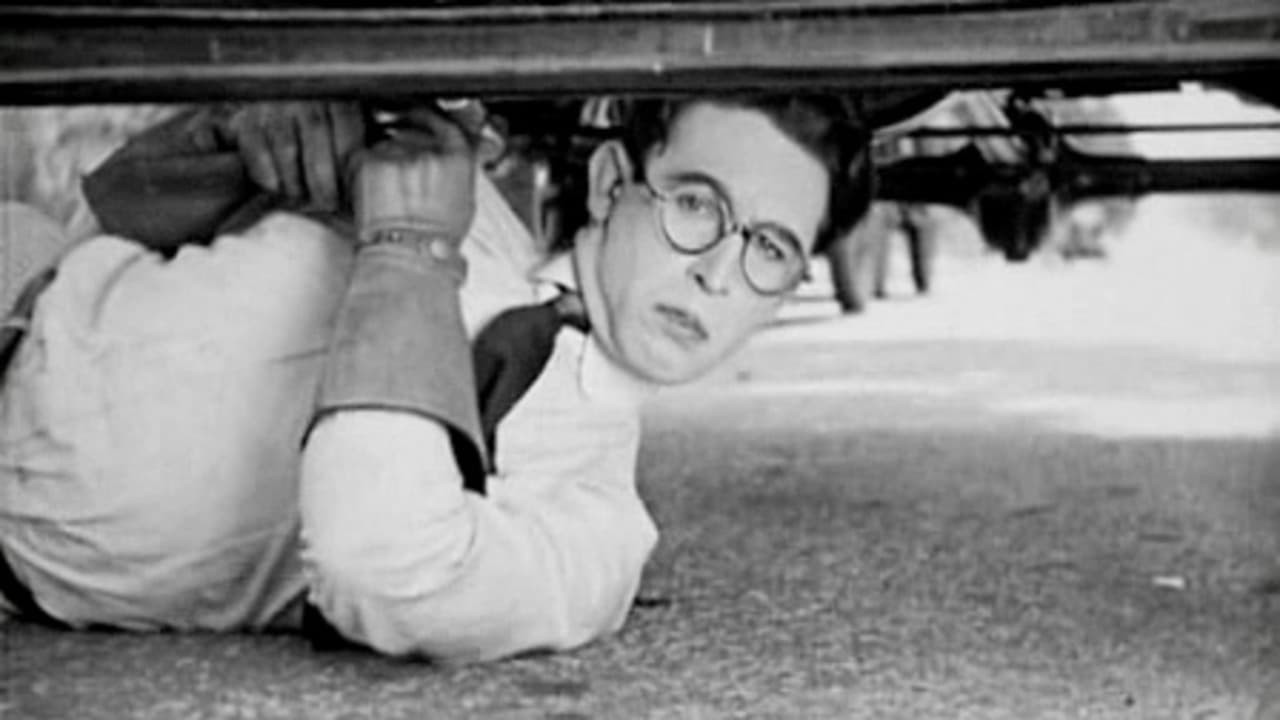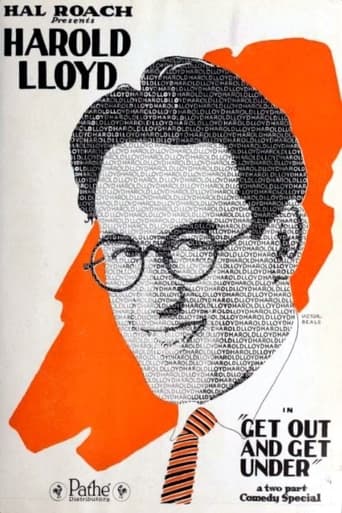

The premise of this Harold Lloyd film is simple. Harold is late for a theater engagement where he's supposed to be playing a character in a local stage production. On his way to the theater, he's sidetracked by the many mishaps that befall him and his car. Sight gags abound before Harold can even get his car out of the garage. When he finally does, it's an unexpected delight. Of course there are other mishaps along the way, and Harold runs into little Ernest Morrison from the Our Gang comedies who pesters Harold with his dog as Harold attempts to fix his car on the side of a road. Perhaps a bizarre scene, although funny, is when Harold takes an injectable syringe from a street addict and uses it to rejuvenate his car. It works and of course Harold ends up chasing and catching up to his car not once but twice. In the end, Harold rushes on stage just in time to take credit for the performance that his stand-in gave in his absence. This is a typical Harold Lloyd film, funny with a lot of sight gags. **1/2 of 4 stars.
... View MoreGet Out and Get Under is Harold Lloyd's first film after an exploding accident that caused him to lose a two fingers and a thumb in one of his hands requiring him to wear a prosthetic glove in movies for the rest of his career. This is a very funny short in which Harold is hurrying to get to the theatre for his performance. Lots of hilarious scenes concerning ways to fix his car, his dealings with a kid (Ernie "Sunshine Sammy" Morrison of the original Our Gang) who keeps hanging around while he's working, a dog, some engineers of a train ferry the car accidentally goes on, a parade, a banana peel (no surprise there), a steep hill, a water tower, a fire hydrant, a "road closed" sign, and some motorcycle cops. His leading lady is played by his eventual wife, Mildred Davis. Produced and directed by comedy mastermind Hal Roach. The music I heard in this version was provided by Vince Giordano and his Nighthawks Orchestra. Highly essential viewing for silent movie comedy fans especially those of Harold Lloyd.
... View MoreThis is a good Harold Lloyd comedy that gets plenty of mileage out of the material, and it has quite a few amusing moments. It is one of many silent comedies that take one situation and then stretch it out as far as possible.The top silent comedians such as Lloyd could often find quite a variety of possibilities in a simple premise.In this case, most of the story has Harold in a desperate rush to get where he is going. The number of obstacles he encounters is pretty creative, from the expected, such as an uncooperative automobile, to unexpected obstacles such as a friendly little boy and a cute dog. There is some decent slapstick, and there are also some good sight gags, a couple of which might be the movie's best moments. It works pretty well overall.
... View MoreThis is one of Harold Lloyd's most enjoyable short comedies, but if things had turned out differently it might never have been made at all. Get Out and Get Under was one of the first films Lloyd appeared in after recovering from a freak accident that nearly claimed his life. In the fall of 1919, while Harold was posing for publicity photos, actor Nat Clifford innocently handed him what was believed to be a prop bomb; it turned out to be real, and when it exploded both men were badly injured. After a period of convalescence Harold resumed his career, but his still-healing facial scars are visible in his first close-up in this film, and if you watch his right hand carefully you can see that he's wearing a prosthetic device in place of the fingers lost in the explosion. Nat Clifford is here too, as the neighbor at work in his garden.Despite the circumstances under which it was made Get Out and Get Under is a surprisingly cheerful comedy, though much of the humor relies on anxiety and frustration. Harold plays an actor in an amateur theater production trying to get to his show on time, but auto troubles and other problems hinder him every step of the way. After a somewhat measured opening the story builds in momentum and suspense, becoming funnier, loonier, and more surreal as it goes along. One bit involving the creative use of a pup tent is especially memorable. Some of the gags suggest routines identified with Buster Keaton, as when Harold makes a wrong turn and crashes a parade (as Buster would do in Cops) or is sidetracked into a railroad yard and gets doused by one of those water spouts (as Buster did several times). It all goes to show that there was a lot of borrowing and cross-fertilization in silent comedy; Lloyd certainly returned the favor and borrowed from Keaton on other occasions. In any event, our hero ultimately achieves his goal, wins the girl, and delivers a neat pay-off gag in time for the fade-out.Modern viewers might be surprised at the sequence involving a drug addict Harold meets during his adventure; the man is actually shown injecting a substance, presumably cocaine, into his arm, leading to a routine reminiscent of Chaplin's Easy Street but with a surprise twist. (Oddly enough, prolific character actor William Gillespie played the dope fiend in both movies!) This sort of subject matter would become absolutely taboo when enforcement of the Production Code kicked in during the '30s, but jokes about illegal substances and drug addicts crop up fairly often in silent comedy. Also of note here is the presence of Ernie "Sunshine Sammy" Morrison, the first African- American kid in the Our Gang series, who plays the boy who insists on participating while Harold is trying to fix his engine. Sammy has an easygoing charm and naturalness before the cameras that is striking in this sequence.
... View More